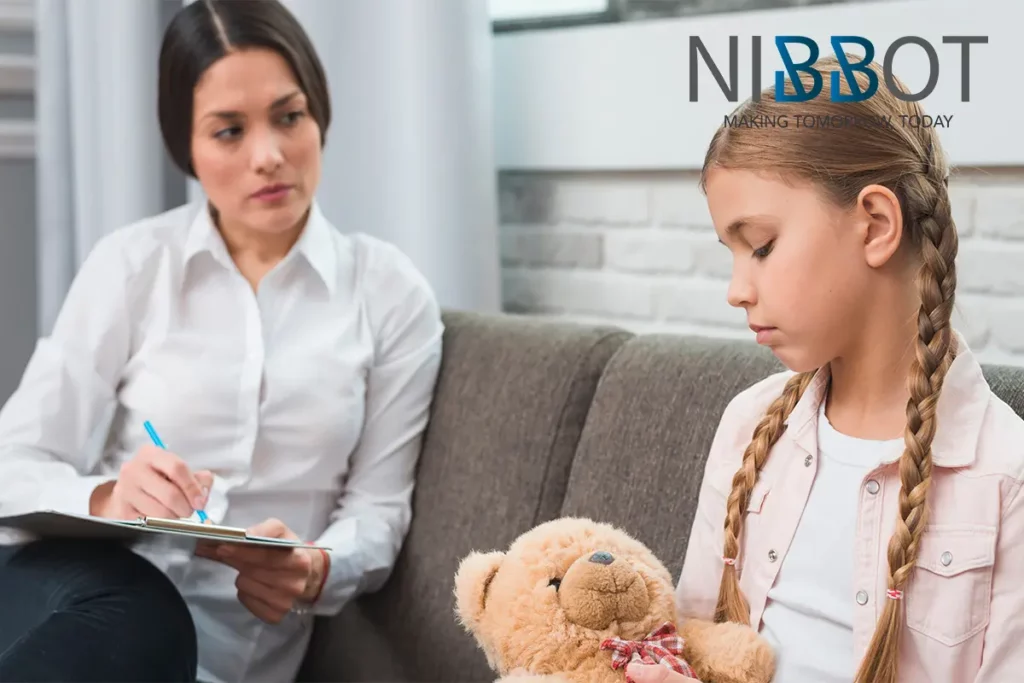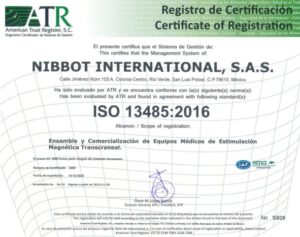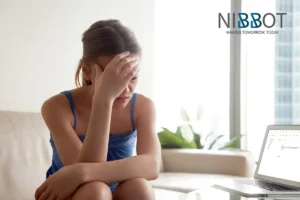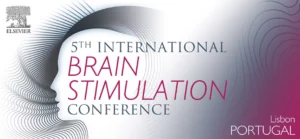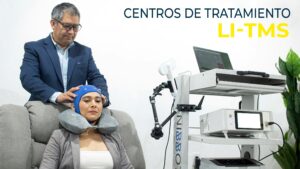Transcranial magnetic stimulation (TMS) is an emerging neuropsychiatric tool with therapeutic and research applications. This involves non-invasive stimulation of cortical neurons by means of a rapidly changing magnetic field that induces weak electrical currents in the brain (Daskalakis et al., 2002a). The stimulation produces specific or general activity changes in the brain with minimal discomfort.
Adult rTMS protocols frequently involve clinical treatment of neuropsychiatric disorders such as migraine headaches, stroke, Parkinson’s disease, mood disorders, and psychotic disorders. There are more than 30 controlled trials of rTMS and six meta-analysis studies supporting the use of prefrontal rTMS for the treatment of major depressive disorder (MDD) in adults. Most of these studies involve the use of high-frequency (>1 Hz) rTMS in the left dorsotarel prefrontal cortex (LDLPFC) based on the assumption that this will increase cortical excitability in this brain region (Croarkin et al., 2010; Lisanby et al. al. al. al., 2002). Other trials have involved stimulation of the right DLPFC with low-frequency (<1 Hz) stimulation under the assumption that this will decrease excessive cortical activity in this hemisphere.
Despite the promising potential in the diagnosis, examination, and treatment of psychiatric disorders in adults, this technology has so far seen somewhat limited use in children and adolescents (D’Agati et al., 2010; Garvey & Gilbert, 2004). The purpose of this article is to present an overview of TMS research in children.
Therapeutic rTMS in child and adolescent psychiatry
Treatment options for psychiatric disorders in children and adolescents are often very limited. In many cases, this population receives suboptimal treatment with consequent polypharmacy, repeated psychiatric hospitalizations, and adverse developmental consequences (Croarkin et al., 2010). Therefore, new therapeutic modalities are essential. At this stage, most research reports of rTMS in children and adolescents consist of case reports and open trials. Safety, ethical issues, and a thoughtful approach to this area of research are critical given neurodevelopmental concerns (D’Agati et al., 2010; Quintana, 2005). However, future research with rTMS should focus on optimal stimulation sites, treatment parameters, and their role in evidence-based algorithms. Results are likely to differ from those of adults. Early intervention with neurostimulation modalities such as rTMS may one day address the developmental course of pathological neurocircuitry and prevent patients from receiving chronic treatment and lifelong disability (Croarkin et al., 2010).
The following is a brief summary of the existing literature on the therapeutic application of rTMS in child and adolescent psychiatric disorders.
Attention Deficit Hyperactivity Disorder (ADHD)
Previously, Weaver and colleagues reported initial results from a double-blind, sham-controlled trial of 10 Hz rTMS at 100% MT. Subjects received 2000 pulses per session applied to the RDLPFC for 10 sessions over 2 weeks. These patients were between the ages of 17 and 21 with a diagnosis of ADHD. Seven of these individuals completed the study without adverse effects. Mean Clinical Global Impression Improvement (CGI-I) (Guy, 1976) and ADHD-IV (Dupaul et al, 1998) scales improved over the course of this trial (Weaver et al., 2008). More recently, Bloch and colleagues described the results of a single-session, double-blind, sham-controlled study of seven male and six female adult subjects with ADHD. In this investigation, subjects received either a high-frequency rTMS session applied to the right prefrontal cortex or a single sham rTMS session. Subjects receiving active rTMS had an improvement in attention (based on rTMS attention score) 10 minutes after the session. Sham rTMS did not show any effect (Bloch et al., 2010). Given the high prevalence and public health burden of ADHD, further work in this area is essential.
Autism Spectrum Disorder (ASD)
Baruth and colleagues (2010) have observed clinical changes in subjects with ASD during the course of rTMS neurophysiological studies. Specifically, they reported the electrophysiological effects of low-frequency rTMS in 25 subjects (9 to 26 years) with ASD and 20 age-matched controls. Early (pre-TMS), relative evoked (100 ms) gamma power using Kanizsa illusory figures was examined along with the impact of 12 sessions of bilateral low-frequency rTMS applied to the DLPFC. After rTMS, ASD subjects demonstrated improvements in discriminatory gamma activity when presented with relevant and irrelevant stimuli. Clinical measures included the Aberrant Behavior Checklist (ABC) (Aman et al., 1985), a clinician-rated scale that assesses irritability, lethargy, social withdrawal, stereotyping, hyperactivity, and communication difficulties. behavior. inappropriate speech. In this study, the irritability and hyperactivity scales were chosen as outcome measures. Other measures included the Social Response Scale (SRS) (Constantino et al., 2003), a caregiver-reported scale that assesses social interest and interaction, and the Revised Repetitive Behavior Scale (RBS) (Lam & Aman, 2007). ), and a large-scale caregiver that measures repetitive and restricted behavior patterns. After twelve sessions of bilateral rTMS, subjects showed reduced patterns of repetitive and restricted behavior as assessed by the RBS. Subjects also had a statistically significant decrease in irritability on the ABC scale. There were no significant changes in social awareness or hyperactivity (Baruth et al., 2010). Another study conducted by this group examined the impact of six low-frequency rTMS treatments for 3 weeks in 13 subjects, ages 9-27, with ASD. After rTMS, these subjects had decreased repetitive ritual behavior based on the RBS. In this group there were no changes in social awareness, irritability or hyperactivity. The authors noted that this sample was comprised of relatively high-functioning individuals with no significant behavioral problems (Sokhadze et al., 2010).
Enticott and colleagues recently described the treatment of a 20-year-old woman with Asperger’s disorder. This clinical case described treatment with the new deep rTMS coil technology, which allows stimulation of deep cortical structures. The research team postulated that the medial prefrontal cortex (mPFC) would be an optimal treatment target, as high-functioning ASD imaging studies have suggested that parts of the mPFC are underactive in these individuals. This 20-year-old woman received 9 deep rTMS sessions consisting of 15 min of rTMS at 5 Hz at 100% resting motor threshold. The coil was placed over the bilateral mPFC. He tolerated these treatments, denied any side effects, and did not miss any sessions. Self-report measures were collected at baseline, immediately after the last treatment, and 1 month after the last treatment. This included the Interpersonal Reactivity Index (IRI) (Davis, 1980), Autism Spectrum Ratio (Baron-Cohen et al., 2001), and the Ritvo Asperger Autism Diagnostic Scale (Ritvo et al., 2008). All of these measures improved after rTMS treatment and at one month’s follow-up. Family members also noted a marked improvement in their social functioning (Enticott et al., 2011).
Schizophrenia
There are five published descriptions of rTMS treatment in children and adolescents with schizophrenia. Walter and colleagues described the treatment of three 18-year-old men with schizophrenia who received 10 daily sessions of 20-Hz rTMS to the right frontal cortex. Two of these individuals showed improvement on the positive and negative symptom rating scales. The third patient showed improvement in hallucinations, agitation, and global functioning. No adverse effects were reported (Walter et al., 2001). Another unique case described by Fitzgerald and colleagues described an 18-year-old woman with chronic schizophrenia (beginning at age nine). He had recalcitrant symptoms with several drug trials, including clozapine. Subsequently, she was treated with 10 sessions of rTMS at 1 Hz at 90% of the applied TM in the left temporoparietal cortex. There was a reduction in the severity of their hallucinations according to the Hallucination Change Scale (Doane et al., 1985) and the Positive and Negative Syndrome Scale (Kay et al., 1987). Six months later, this patient relapsed despite clozapine treatment. At this point, he received an additional course of rTMS with identical parameters that produced temporary clinical improvement. Three months later, he required a third course of treatment (Fitzgerald et al., 2006). Another group reported on the treatment of an 11-year-old boy with drug-resistant schizophrenia. This patient was severely impaired, aggressive, and had struggled with delusions and hallucinations for 2 years. Antipsychotic medications had been ineffective and problematic due to side effects. An fMRI showed increased activity in the auditory cortex with concurrent auditory hallucinations. Subsequently, this child received 10 sessions of 1 Hz rTMS in the left temporoparietal cortex. His auditory hallucinations were reduced by 50% as assessed by the Auditory Hallucinations Rating Scale (Hoffman et al., 2003). His progress was maintained with repeated sessions over 5 weeks. According to the Children’s Global Assessment Scale (Shaffer et al., 1983), their functioning also improved. As a result, he was discharged and returned to school. There were no side effects or adverse effects during the course of treatment with rTMS (Jardri et al., 2007).
Tourette syndrome
Experts have explored the idea of applying rTMS as a treatment for Tourette syndrome (TS) based on the assumption that the underlying pathophysiology involves the basal ganglia and an overactive motor cortex. Chae and colleagues (2004) applied rTMS at 1 Hz or 15 Hz at 110% MT or sham stimulation to the left motor cortex or left prefrontal cortex in a randomized, blinded, crossover study of 8 TS subjects. Two of these subjects were 19 years old and the others between 22 and 60. There was an overall improvement in tic and obsessive compulsive disorder (OCD) symptoms during the study and none of the subjects worsened. There were no significant differences between treatments and rTMS was well tolerated (Chae et al., 2004). In a subsequent open-label trial, 10 male children (mean age 11.2 ± 2.0 years) with TS participated, receiving ten sessions of 1 Hz rTMS at 100% MT applied to the supplementary motor area (SMA). All subjects completed the trial with no adverse effects and no worsening of ADHD, depression, or anxiety symptoms. Tic symptoms improved over 12 weeks according to the Yale Global Tourette Syndrome Severity Scale (YGTSS) (Leckman et al., 1989) and the Clinical Global Improvement (CGI) scale (Kwon et al., 2011). ).

